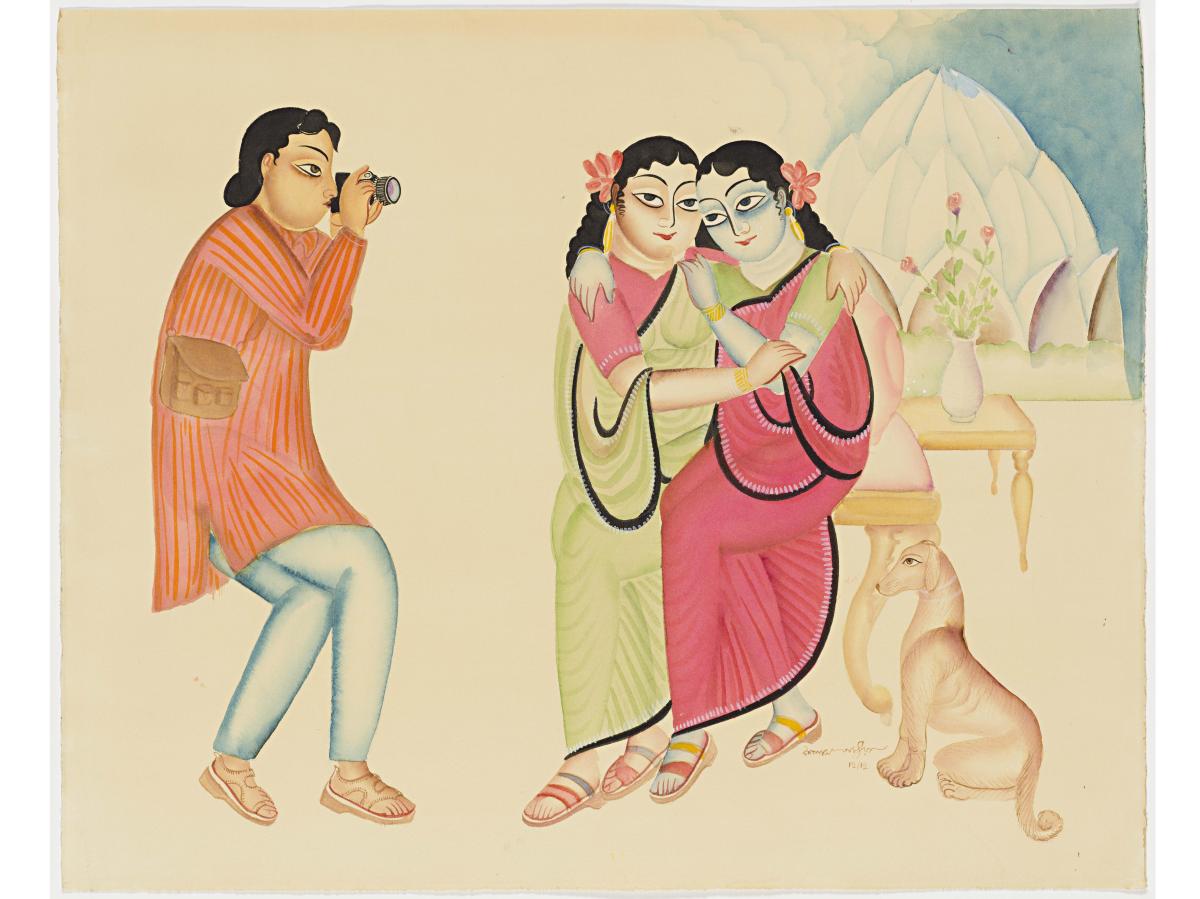Image: Kalam Patua, Photo 2012. Watercolour on paper, 38.1 x 55.8cm. Proposed for the Queensland Art Gallery Collection. Image courtesy QAGOMA.
The Queensland Art Gallery and Gallery of Modern Art, Brisbane (QAGOMA) is known for its outstanding collection of contemporary Indigenous Australian art.
For The 8th Asia Pacific Triennial of Contemporary Art (APT8) ‘it was important to broaden those discussions to examine indigeneity in other cultural contexts’, explained Maud Page, Deputy Director, Collection and Exhibitions.
Kalpa Vriksha: Contemporary Indigenous and Vernacular Art of India showcases the work of contemporary artists whose work draws on local traditions from across India. The exhibition takes its title from a Sanskrit term evoking divine and earthly trees.
QAGOMA Associate Curator of Asian Art, Tarun Nagesh explained that a thread running through this APT examines how the vernacular informs contemporary practice in both subject matter and process. ‘We wanted to acknowledge that in India there’s a huge range of what’s often referred to as folk practices as well as Indigenous practices. We couldn’t cover everything, but have focussed on some traditions and styles that are developing quickly, with artists working experimentally in those practices and transforming them.’
The exhibition will focus on eight traditions or styles, showcasing beliefs, inherited customs and local art practices which have been transformed relatively recently by artists whose expanded world view invokes commentary on contemporary life, social issues and global events.
‘How these Indian indigenous and vernacular practices feature in contemporary art discussions is an ongoing debate,’ said Page. ‘We were interested to reflect that these conversation were recently broadened and given a prominent platform in India’.
APT’s approach is to focus on individual artists rather than attempt to represent entire communities.
One such artist is Pushpa Kumari, whose incredibly fine, detailed work is informed by the women’s practice of Mithila, a style of Hindu painting characterized by eye-catching geometrical patterns and originating from the Mithila region which borders India and Nepal.. Traditional Mithila work focussed on Hindu marriage traditions but Kumari’s work deals with contemporary issues such as women’s rights.
Powerful social commentary can also be found in the work of Kalam Patua, a Kalighat artist. Kalighat evolved in 19th century Kolkata from miniature and local scroll painting traditions, and is known to incorporate local commentary and gossip. Patua has adapted the form to examine aspects of contemporary life, from the humorous and satirical to the disturbing.
Kalpa Vriksha has an antecedent in APT3 in 1999, which featured the Rajwar sculptures of the late Sonabai. Sonabai’s family and community have continued and developed the Rajwar tradition which Sonabai originally developed in isolation, and their work is included in APT8. ‘They are wondrous sculptural forms that are very unique and imaginative,’ enthused Nagesh.
The Rajwar sculptures are one example of continual change in India’s contemporary art practice.
Kalpa Vriksha: Contemporary Indigenous and Vernacular Art of India opens 21 November 2015 and continues until 10 April 2016. For more information visit the APT8 website.




